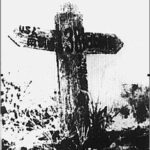As the entry of the Soviet army into the war against Japan was decided at the Yalta Conference held in February 1945, Americans tried to limit the advance of Soviet army towards the east and expand their own operational theatre. They took into consideration the fact that their ground force stationed in the Philippines, thousands of miles away from the Korean peninsula, could hardly reach the Korean peninsula in a short time. Therefore, at the Potsdam Conference held from mid-July that year to early August, they avoided discussion about the drawing of a line for the advance of their ground force. Instead, they realized a scheme to define the objective of their operations in Korea by their air force and navy. They also worked out an operational plan in anticipation of the immediate surrender of Japan.
The US military chiefs held a Coordinating Committee Meeting of Three Departments of State, the Army and the Navy on August 10 where they discussed the issue of accepting the surrender of the Japanese army, and entrusted the operation bureau of the Department of the Army to draw the operational line of the US army in an appropriate area of Korea. Those who gathered for this task were junior officers below brigadier general such as Dean Rusk (later the US Secretary of State) and Charles Bonesteel (the future commander of the UN forces). As a result of their deliberations on where to limit their operational theatre for disarming the Japanese troops, they drew a demarcation line at the 38th parallel of the north latitude on the map of the Far East hanging on the wall, so as to divide the Korean peninsula into two.
The Japanese “Imperial Headquarters” restructured the “command system for operations on the mainland” in February that year, dissolving the “Korean Army” as a general term for the Japanese troops occupying Korea. The troops stationed to the north of the 38th parallel were placed under the command of the Japanese Kwantung Army, while those to the south came under the command of the 17th Corps, which had been the field army of the “Imperial Headquarters”. Using this restructuring as an excuse, the United States produced a “final plan”, according to which the Soviet Far East army would disarm the Japanese Kwantung Army stationed north of the 38th parallel and the US Far East forces would demilitarize those south of the line. The plan was submitted to the Joint Chiefs of Staff for examination. It went through the Coordinating Committee of Three Departments of State, the Army and the Navy and was finally approved by Truman, the then US President. With the defeat of Japan, the division of Korea became US policy. As illustrated above, the Korean question was decided according to the interests of the United States after the World War II, contrary to the requirement and demand of the Korean people for independence. When the United States occupied south Korea on September 8, Korea was divided into the north and the south, and the nation which had lived on the same territory with the same blood from ancient times had been artificially divided.


